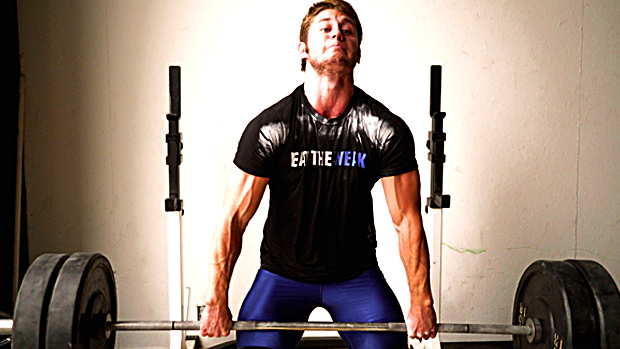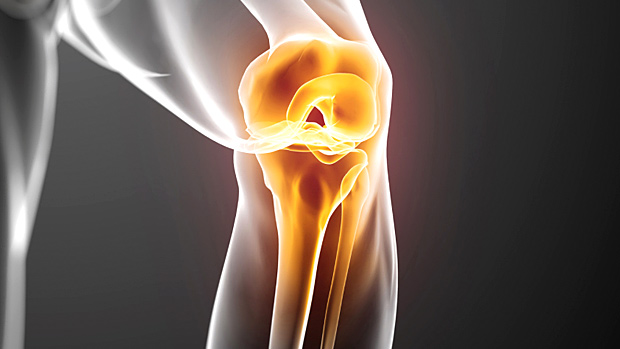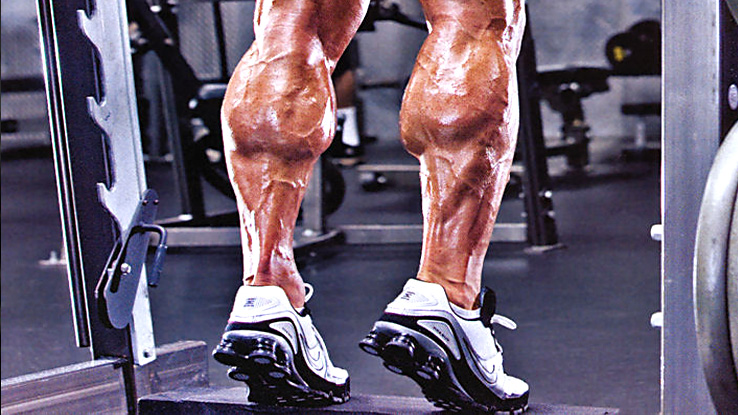No Plan, No Progress!
Some training programs are really, really good. You can look at them and see exactly what the lifter or coach is trying to achieve.
And on the flip side, you see some that are really, really bad. They're just a mish-mash of random techniques and pet exercises with no real focus or goal.
Here are the top five reasons why you might not be seeing results with your current training plan and what you can do to rectify the situation, starting with the most obvious.
Here's a recent discussion I had with a young lifter:
"Mike, I'm just not seeing progress."
"That sucks, man. Tell me about your program. What are you focusing on?"
"Well, I don't have a set program right now..."
The guy was complaining about the fact that he hadn't seen progress, yet wasn't even on a program! You must have a program, and preferably one that's focused on one specific goal.
In a perfect world, a trainer or coach will write one for you that's geared towards your specific strengths and weaknesses. But even if you don't have the luxury of having a coach, the Intranetz is full of programs that work.
Hell, right here on this site you can probably find 1,000 or more workouts that run the gamut from leaning out, to getting bigger, to getting stupid strong.
The key is to pick one program and follow it. As a general rule, if you don't follow a program for at least 12 weeks, then you don't have the right to say it doesn't work.

As a lifter, you probably want it all. You want to look huge, have shredded abs, and put up raw, elite powerlifting numbers... all at the same time. Well, come back to reality. It's definitely possible, but it's not going to happen overnight.
And perhaps more importantly, you're not following one program to achieve all those goals.
It's no different with aspiring coaches and trainers. The more they learn, the more they want to include in a program. They prescribe glycolytic intervals to lean their clients out, max effort work to get them strong, and forced reps and occlusion training to get their swole on. The bad news is their clients make little, if any, progress while training like this.
Make it a goal to really, truly focus on one goal.
Again, the three-month rule works well here. Want to lean out? Take three months to tighten up nutrition and build a program that works to increase density over time.
Want to put on size? Crank up the calories and focus on big, heavy lifting in higher rep ranges. And don't puss out when it comes time to go hard – no one said this would be easy.
And if you just want to get brutally strong, find a system that works for you and stick with it. 5/3/1, Westside, Sheiko, they all work. But they don't work when you're bouncing from one to the other with each ensuing training cycle.
While "corrective exercise" is seeing a backlash, this basic premise can't be ignored:
If you move like shit, you're not going to see the kind of gains you would like, regardless of your goals.
You don't need to do correctives for years on end to see changes. In fact, the more we learn about the brain and the nervous system, the more we see it's quite possible for instantaneous changes and improvements in how someone moves. And that's pretty darn cool.
If your movement issues are holding you back, or if you're one of the guys or gals that's constantly beat up and injured, try taking 2-3 months to focus on improving how you move and getting yourself right.
Dave Tate actually uses a "Movement Quality/Mobility" training block one time per year. After that, he moves on to cooler goals like strength, mass, or leaning out.
Try taking the bar off your back and do goblet squats or two-kettlebell front squats. Sub out your heaving pressing for push-up variations. Swap out your stale core training exercises and do something more challenging for the total body like Turkish get-ups or kettlebell windmills.
Hell, you can even take many of your favorite pet exercises and perform them in a half-kneeling position and reap some serious benefits. It's not the sexiest thing you'll ever do, but taking a dedicated block of time and focusing on movement quality will improve your gains in virtually any training program you use thereafter.

While many people regard autoregulation as an advanced concept, it doesn't necessarily have to be. In fact, a ton of autoregulation is just old-fashioned common sense.
Oh, you drank your face off last night? It's probably not the best idea to crush a squat workout. Are your stress levels so high because your dog died, girlfriend left you, and you just lost your job? Then take a day off from the heavy iron, or just do some light recovery work.
There are plenty of subjective recovery trackers you can use to improve your training:
- Fatigue
- Sleep Quality
- Muscle Soreness
- Stress Levels
- Mood
Rank each one on a scale of 1-5 (one being the worst score, 5 being the best) and track your total, as well as individual factors.
Over a few weeks you'll start to notice trends in your training, recovery, etc., and be able to customize each individual training session to a higher degree.
The next level would be something more objective such as heart rate variability. There are mobile versions of HRV software, and they can help you dial in and refine your training even further.
Regardless, if you aren't getting the most out of your current training program, do your best to autoregulate and push your body on the days it's prepared, and back off on days when it's not.
Recovery is the redheaded stepchild in the training world. Everyone knows it's there, but no one wants to acknowledge its existence.
In my world, I'm spending an ever-growing amount of time stressing the importance of recovery between sessions because, as the saying goes, "It's not how hard you can train, but how well you can recover that really matters."
A cheap and easy way to improve recovery is to get light training sessions in throughout the week. This could be in the form of circuits or standard active recovery work such as walking on a treadmill, riding a stationary bike, or getting on the rower.
Active recovery almost always trumps passive recovery.
With that being said, don't neglect the most basic aspect of recovery, which is sleep. Many lifters want all the cool regeneration and recovery protocols, yet they're getting four hours of sleep per night, and the quality is poor to boot.
If you sleep poorly, this is the single most important thing you can do to improve your training. It's not necessary to list all the usual better-sleep techniques because you've heard them hundreds of times before. Just do them.





